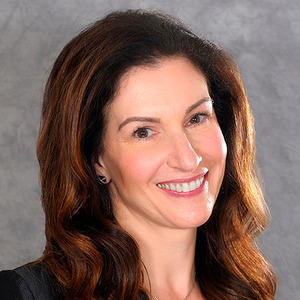Power List

Audrey Rostov
Power List Profile
Director of Cornea, Complex Cataract and Refractive Surgery, Northwest Eye Surgeons; Affiliate Surgeon, HCP/CureBlindness, Seattle, Washington, USA
What’s been the biggest breakthrough in ophthalmology/your specific field over the last 10 years?
One of the biggest breakthroughs in the field of cornea over the last 10-15 years is the adoption of endothelial keratoplasty worldwide, as a first line treatment for endothelial cell dysfunction. Primary endothelial cell dysfunction as in Fuchs’ dystrophy or secondary endothelial cell dysfunction as in graft failure can be routinely treated with less invasive DMEK and/or DSEK. These less invasive techniques have less rejection, faster visual rehabilitation and require less follow up care and can be especially suited for LMIC.
One of the biggest breakthroughs in the field of refractive surgery over the last 10 years is the SMILE procedure for the treatment of myopia and astigmatism. This less invasive corneal refractive surgical procedure provides equal outcomes to LASIK for myopia and low amounts of astigmatism ( -1.50 to -10.00 myopia and 0.75-3.00 diopters cylinder). In addition it has less associated dry eye and the lack of a “flap” makes it suitable for active patients in adverse environments where flap dislocation can be a potential issue.
Do you have any personal missions for the next 10 years?
One of my personal missions for the next 10 years is to continue to expand cornea, cataract and refractive surgery in LMIC and under-resourced regions, such as Southeast Asia and Sub-Saharan Africa. I previously had worked with SightLife as a global medical director and have done work in eye bank development, corneal and cataract surgeon training, and developing curricula for surgical skills and post op care. I am now working as an affiliate surgeon with HCP/CureBlindness, which has merged with SightLife. I am continuing this important work to expand access to cornea care and to help to reach the unreached and needlessly blind.
What is your prediction for where ophthalmology/your subspecialty will be 10 years from now?
Ten years from now, endothelial keratoplasty will be replaced by endothelial cell therapy performed with injections of endothelial cells – at least in upper income countries. I would like to see it expanded in LMIC and made affordable for those in under-resourced settings.
What would you like to see change in ophthalmology/your subspecialty over the next 10 years?
I would like to see an emphasis on decreasing OR waste and medical waste in general. Global warming is accelerating, the WHO has declared climate change the biggest public health threat, and we need to decrease waste, repurpose and reuse instruments and supplies when possible. We need to eliminate the “single use” concept of our throw away culture. The OR waste generated in a single cataract case in the US is 2.3–3.9 kg, compared with the waste generated from a single cataract surgery in India at Aravind, which is 0.25 kg – two thirds of which is recycled, and Aravind in India does not have an increased incidence of infection.
Who would you invite to your dream dinner party?
My dream dinner party would include my husband, our three adult “children” (they are all in their 20s) and their partners, and some close friends. I love to spend time with people whom I love and add meaning to my life.
